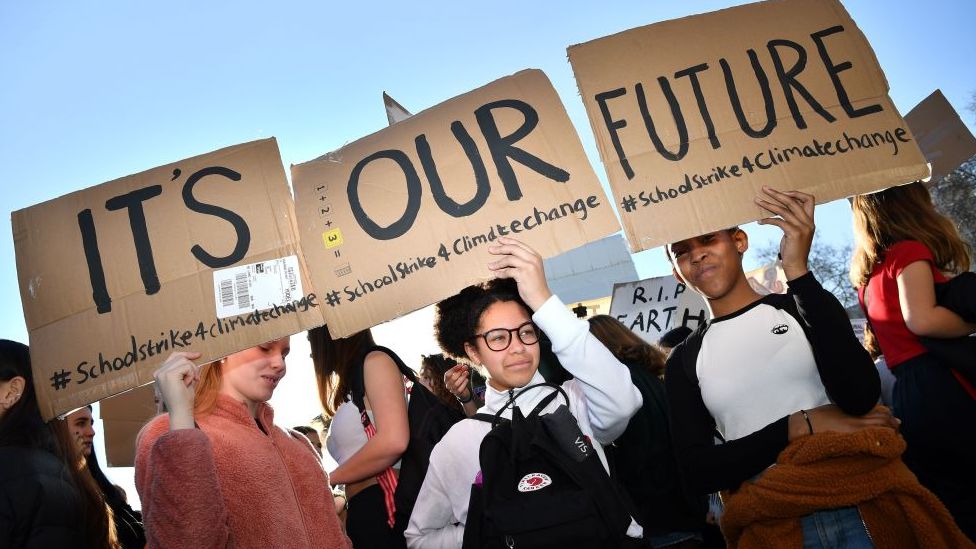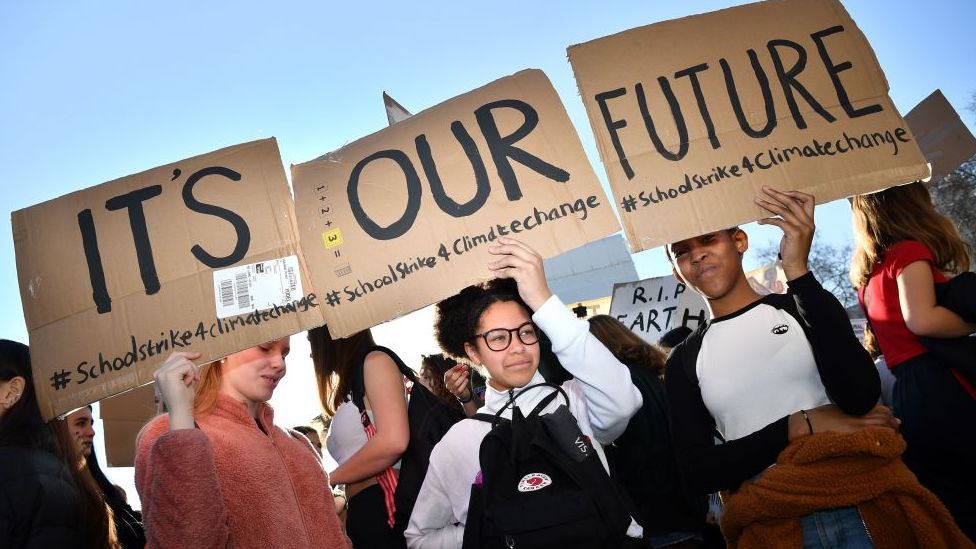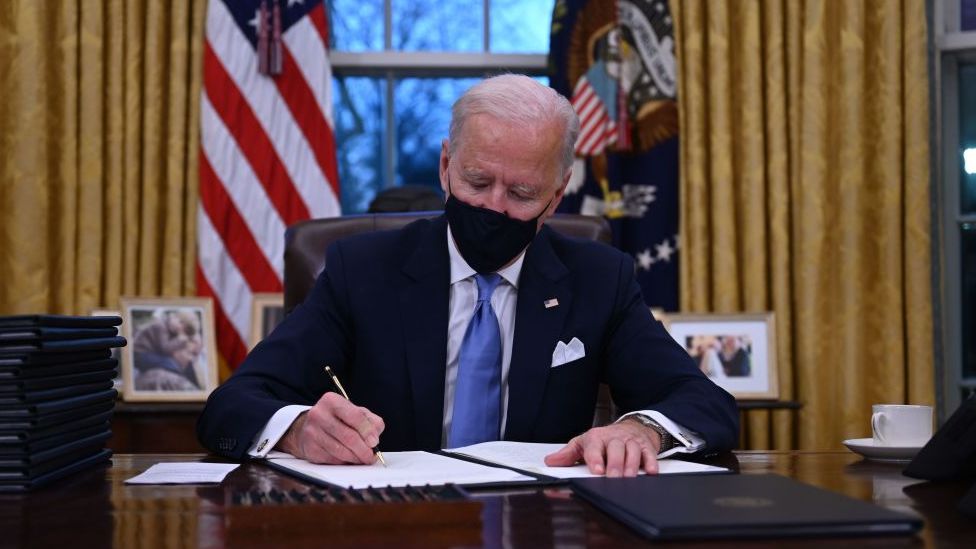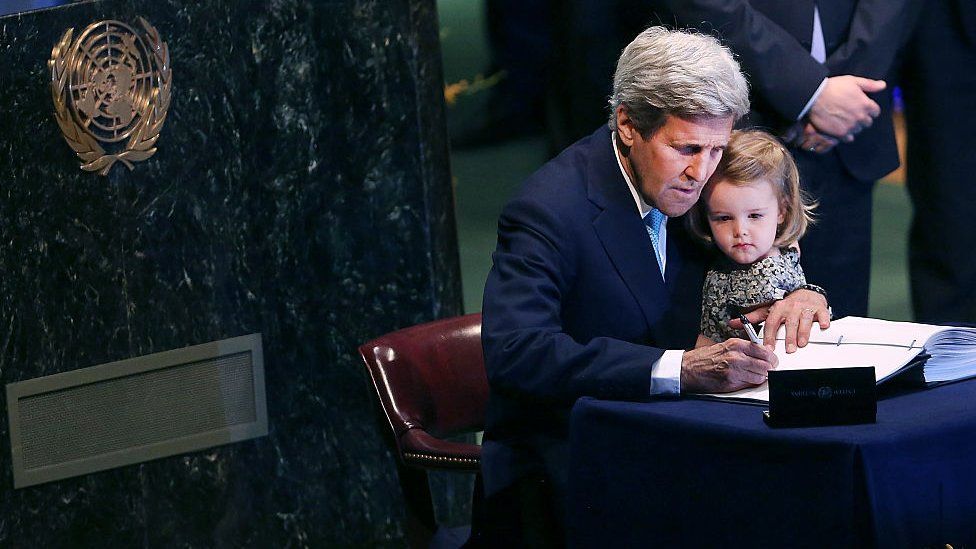What is the Paris climate agreement and why did the US rejoin?
After rejoining the agreement, the US wants to show it is serious about climate change. …

By Helen Briggs
Science correspondent, BBC News
- Published
- 10 hours ago

The US has pledged to cut carbon emissions in half, compared with 2005 levels, by the end of this decade. The new target will be unveiled at a virtual summit of 40 global leaders.
The announcement comes after President Joe Biden reversed predecessor Donald Trump’s decision to withdraw the US from the Paris Agreement.
What is the Paris Agreement?
The Paris Agreement is a legally binding international treaty on climate change.
Adopted by nearly 200 countries in the French capital on 12 December 2015, it came into force on 4 November 2016.
The deal united all the world’s nations – for the first time – in a single agreement on tackling global warming and cutting greenhouse-gas emissions.
That agreement had set targets for cutting emissions for a handful of developed countries – but the US later pulled out and others failed to comply.
What are the main aims of the Paris deal?
- To keep global temperatures “well below” 2.0C (3.6F) above pre-industrial times and “endeavour to limit” them even more, to 1.5C
- To limit the amount of greenhouse gases emitted by human activity to the same levels that trees, soil and oceans can absorb naturally – beginning at some point between 2050 and 2100
- Each country sets its own emission-reduction targets, known as national determined contributions (NDCs), reviewed every five years to raise ambition
- For rich countries to help poorer nations by providing “climate finance” to adapt to climate change and switch to renewable energy
Does the Paris Agreement go far enough?
The plan is to create a climate-neutral world by the middle of the century.
Becoming “climate neutral” means reducing greenhouse-gas emissions as much as possible but also compensating for any remaining emissions by removing carbon dioxide and other greenhouse gases from the atmosphere, using natural or artificial processes.
But the average global temperature has already risen by about 1C.
And scientists say the rollout of the agreement must be stepped up to have any chance of curbing dangerous climate change.
They also say limiting the temperature rise to no more that 1.5C – rather than 2C – could:
- prevent small island states sinking beneath the waves
- help millions of people avoid the impacts of extreme weather
- limit the chances of an ice-free Arctic summer
Why did the United States leave and then rejoin?
The US, which has historically released more greenhouse gases into the atmosphere than any other nation, is the only country to have withdrawn from the Paris deal.
President Trump announced his intention to leave in 2017, saying letting countries such as India and China to use fossil fuels while the US had to curb its carbon was unfair.
 image copyrightGetty Images
image copyrightGetty ImagesBut President Biden pledged to return the US to the Paris Agreement and make the fight against climate change a top priority of his administration.
His special envoy on climate change, John Kerry, tweeted President Biden was “restoring America’s credibility and commitment” and the world “must and will raise ambition” to tackle global warming.
What does Joe Biden’s virtual summit have to do with the Paris Agreement?
The summit is an important moment for the new US president to show voters – and the rest of the world – how serious he is about tackling climate change.
As the US government “re-enters the global climate fight”, Mr Biden wants to underscore the urgency and economic benefits of stronger climate action – the White House says.
 image copyrightGetty Images
image copyrightGetty ImagesIn recent days, other countries have made announcements about their climate-change policies.
Achieving the goal would require British people to embrace more:
- electric cars
- low-carbon heating
- renewable electricity
Meat and dairy consumption would also have to be cut.


